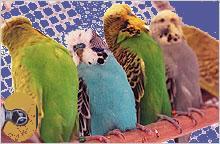 ++Aboriginal Rock Paintings++ ++Aboriginal Rock Paintings++ |
 ++Carnavon Gorge QLD++ ++Carnavon Gorge QLD++ |
 ++Katoomba NSW++ ++Katoomba NSW++ |
 ++Roma QLD++ ++Roma QLD++ |
 ++Sydney City Center++ ++Sydney City Center++ |
 ++Sydney's Darling Harbour++ ++Sydney's Darling Harbour++ |
 ++Sydney Opera House++ ++Sydney Opera House++ |
 ++Aboriginal Rock Paintings++ ++Aboriginal Rock Paintings++ |
 ++Carnavon Gorge QLD++ ++Carnavon Gorge QLD++ |
 ++Katoomba NSW++ ++Katoomba NSW++ |
 ++Roma QLD++ ++Roma QLD++ |
 ++Sydney City Center++ ++Sydney City Center++ |
 ++Sydney's Darling Harbour++ ++Sydney's Darling Harbour++ |
 ++Sydney Opera House++ ++Sydney Opera House++ |
 |  |  |  |
| +countries++photographic galleries++ƒI[ƒXƒgƒ‰ƒŠƒA@ƒŒƒXƒgƒ‰ƒ“ƒiƒr++australia links++about rob sullivan |

The AboriginalArt.com.au website proclaims defiantly: "They say we have been here for 40 000 years, but it is much longer -
However, a more pragmatic, western view is that Australia's original inhabitants -- the Aborigines -- migrated to the Land Downunder in three major waves from Asia, starting some 40,000-60,000 years ago.
 They also survived in localised patches of rainforest in Arnhem Land and Kakadu. Without these refuges, the inhabitants would have become extinct due to climatic changes. Westerly winds that now roar across the Southern Ocean then blew across the middle of Australia, creating great mobile sand dunes. At the other end of the continent, the impact on humans was the opposite, with the Ice Age allowing hunter-gatherers a greater land area in which to hunt as the tree cover was reduced. Evidence for this new understanding comes from caves such as one at Carpenters Gap in the Kimberley and Purit Jarra in central Australia. They also survived in localised patches of rainforest in Arnhem Land and Kakadu. Without these refuges, the inhabitants would have become extinct due to climatic changes. Westerly winds that now roar across the Southern Ocean then blew across the middle of Australia, creating great mobile sand dunes. At the other end of the continent, the impact on humans was the opposite, with the Ice Age allowing hunter-gatherers a greater land area in which to hunt as the tree cover was reduced. Evidence for this new understanding comes from caves such as one at Carpenters Gap in the Kimberley and Purit Jarra in central Australia.Temperatures started rising 14,000 years ago and by 10,000 years ago the country was warmer and wetter than now, sparking a widespread surge in plant growth and recolonisation, and leading to optimum conditions for hunters and gathers. This was the Aboriginal Golden Age. By 10 000 years ago the vegetation patterns reached approximately their present condition. Through all this time sea levels were also fluctuating. At their lowest point sea levels were more than 100 metres below their present level and Australia formed one giant landmass from the bottom of Tasmania through to New Guinea.
Eureka StockadeI believe this was Australia's second crisis war, coming about 70 years after white settlement. I mentioned before that experts believe there were three great Aboriginal influxes, bringing immigrants from Asia. The fourth great migration began in 1788, and carried millions of colonists from Europe, principally the United Kingdom and Ireland, but more recently from southern Europe, Asia and the Middle East. Somehow the peoples of the four influxes have managed to mix and create a new race of humanity n the next article, I will discuss what exactly makes up the Australian personality.
|
| |||||||||